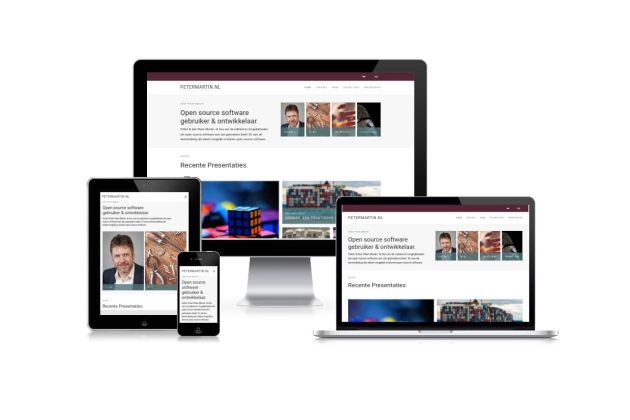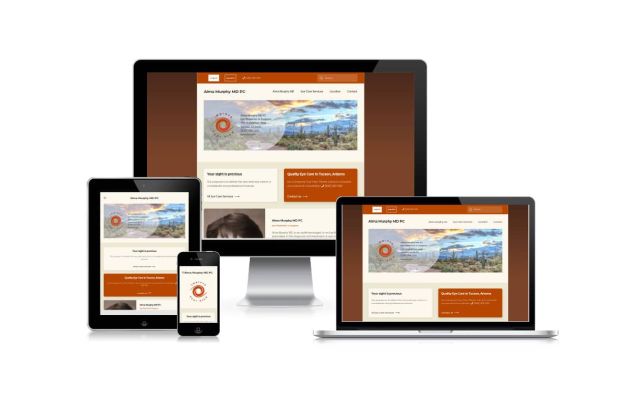
Multilingual website
With a multilingual website you will have a larger range of visitors. The disadvantage is that maintaining a multilingual website is more work, especially if the website has not been set up efficiently.
A multilingual website with Joomla CMS
We build efficient multilingual websites with Joomla CMS. This Content Management System has multilingualism as standard functionality. No plugins need to be installed so that the technical management remains simple.
System texts versus content
With a multilingual website you have to deal with system languages and content languages. System languages ensure that system texts at the frontend (e.g. the "read more" button) are displayed in the correct language. This can be done via language files. Such system texts can be adapted via so-called language "overrides".
Content languages allow website administrators to offer articles in different languages. If necessary, articles and menu buttons from one language can be linked to articles and menu buttons from another language. Experience shows that not all content needs to be available for all languages. Consider in advance which parts are important for other languages.
LTR versus RTL
Most languages are read from left to right. Arabic and Hebrew are RTL languages and are read from right to left. This has consequences for the layout of the website.
Top level domain names
In general, domain names from a certain country extension (e.g. .nl) will score better with search engines with the same country extension (e.g. google.nl). By using plugins it is possible to make the different languages from the multilingual website available via different top level domain names (e.g. domain.nl for Dutch, and domain.com for English).
Workflow
Managing a multilingual website takes more time. In general, every article needs to be offered for all languages. And more people can work on a website, each in their own language area. It can also happen that languages are used that are not readable for everyone. We advise you on a good workflow.

Why is a multilingual website important?
Not everyone speaks or understands the same language. By offering your website in multiple languages, you make your content accessible to a wider audience. This helps attract potential customers or visitors from different countries.
People feel more comfortable and engaged when they can read information in their own language. This improves the user-friendliness of your website and can increase conversion rates.
A multilingual website shows that you are serious about international customers. It builds trust and shows professionalism to your audience.
By optimizing your website in different languages, you can rank higher in search engines like Google, Bing, and local search engines. This helps people find you more easily when searching in their own language.
If your competitors offer their website in only one language and you offer more, you have a strategic advantage and can capture a bigger share of the market.
Customers are more likely to buy products or services if they can understand the information in their own language. This lowers the barrier to making a purchase or getting in touch.
How to build a multilingual website?
You can set up a multilingual website in different ways:
- Manual translations: You translate the content yourself or use a professional translator.
- Automatic translations: Use tools like Google Translate or AI translations (e.g. DeepL) to quickly translate content.
- Hybrid approach: Start with automatic translations, then let a professional improve the most important pages.
You need to decide how to structure the different language versions:
- Domain per language: de-beste-website.nl for Dutch, the-best-website.com for English, die-beste-website.de for German, le-meilleur-site-web.fr for French, and el-mejor-sitio-web.es for Spanish.
- Subdomains: nl.db8.nl, en.db8.nl.
- Subdirectories (recommended for SEO): https://db8.nl/nl/ for Dutch and https://db8.nl/en/ for English.
You can optimize different language sections of your site for SEO:
- Use hreflang tags to tell search engines which language and region each page targets.
- Translate meta titles and descriptions for better SEO.
- Use local keywords: Not every language uses the same search terms — for example, "chips" vs "fries".
- Automatic on-the-fly translations are often slower (bad for SEO) and less accurate. Short pages especially can lack enough context for a good translation.
- Use AI tools like DeepL or Google Translate for quick translations.
- Manually translate key pages and product descriptions for accuracy and a professional look.
For a multilingual website, a user-friendly User Interface (UI) is essential:
- Place the language switcher in a logical spot, like top right or in the main menu.
- Make sure the website remembers the selected language for future visits.
- Adjust the design for language differences, like longer or shorter texts (e.g. German vs Chinese).
- Check translations manually, ideally by a native speaker.
- Test the navigation: Does switching between languages work smoothly?
- Check SEO and indexing via Google Search Console.
How we help you with multilingual websites!
We advise businesses on the best strategy to set up a multilingual website. We help choose between:
- Manual translations for maximum accuracy.
- Automatic AI translations using tools like DeepL.
- A hybrid approach, combining automatic translations with professional review.
We help businesses choose the right structure for their website to improve both user experience and SEO. This can include:
- Language-specific domains (e.g. voorbeeld.nl and example.com).
- Subdomains (e.g. nl.company.com, fr.company.com).
- SEO-friendly subdirectories (e.g. company.com/nl/ and company.com/en/).
We make sure multilingual websites perform well in search engines by:
- Correctly implementing hreflang tags.
- Optimizing meta titles and descriptions for each language.
Doing keyword research to find the best terms per language.
We help businesses balance speed and accuracy by:
- Using AI-powered translations for fast content creation.
- Manually translating key pages and product descriptions.
- Ensuring automatic translations don’t harm site speed or SEO.
To provide a consistent and intuitive user experience, we help you with:
- Placing language switchers in a logical location (e.g. top right or in the main menu).
- Remembering language settings for returning visitors.
- Adapting the design for text length differences between languages.
We support you to ensure your multilingual website works properly and stays up to date:
- Manual translation checks (preferably by native speakers).
- Navigation testing to ensure smooth language switching.
- SEO and indexing checks via Google Search Console.
Language versus country
A multilingual website is about making the content of a website available in several languages. Languages sometimes have several variants. For example, British English and American English use different words and/or spellings.
Furthermore, languages do not respect national borders. A Spanish-speaking person in San Francisco, USA will probably visit your website in Spanish, but is interested in products available in that city. If you want to make parts of your content available to specific countries, a language button is not sufficient.
We have experience with both multilingual websites and location-specific content.
the-best-website.com
A good example of a multilingual website with 5 languages is "the-best-website.com". This website is about what makes a good website and how to test it.
The website consists of one Joomla website with 4 extra language files. A custom plugin makes sure every language is available under a toplevel domain name:
- English: The best website: https://the-best-website.com/
- German: Die beste Website: https://die-beste-website.de/
- French: Le meilleur site web: https://le-meilleur-site-web.fr/
- Spanish: El mejor sitio web: https://el-mejor-sitio-web.es/
- Dutch: De beste website: https://de-beste-website.nl/




